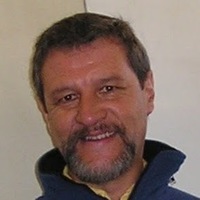Objectives
This talk will be held in collaboration with GEO3BCN-CSIC and the BSC Associated unit: Computational Geophysics Research Unit
Abstract: A parameter of utmost importance in quantifying the energy of earthquakes is stress drop. There has been much discussion about how to estimate it; however, the possibility that stress drop during the earthquake is not total or, even, that what is known as "overshoot" occurs is rarely discussed. In the case of partial stress drop (quantified by the parameter ε), accelerations are approximately 1.6/ε times higher at high frequencies than what would be expected for a 100% stress drop corresponding to the same seismic moment. This has significant implications for structural design and seismic risk. In this talk, we will discuss ways to estimate partial stress drop, overshoot, and their relationships with physical aspects of the seismic source such as friction. We will provide examples of results for earthquakes of different mechanisms and tectonic regions.
 Short Bio: Geophysical engineer by the UNAM, and Doctor in Geophysics (PhD) with a speciality in Seismology, by the University of Colorado-Boulder in the USA. He is currently a titular researcher C at the Geosciences Centre, National Researcher Level III and member of the Mexican Academy of Sciences. He is internationally recognised for his work on the evaluation of natural and artificial seismicity variations. His interest is also focused on seismic source physics, precursor patterns, energy characteristics and spatio-temporal distribution of seismic events and their use as stress monitors, using both observational methods and computational simulations.
Short Bio: Geophysical engineer by the UNAM, and Doctor in Geophysics (PhD) with a speciality in Seismology, by the University of Colorado-Boulder in the USA. He is currently a titular researcher C at the Geosciences Centre, National Researcher Level III and member of the Mexican Academy of Sciences. He is internationally recognised for his work on the evaluation of natural and artificial seismicity variations. His interest is also focused on seismic source physics, precursor patterns, energy characteristics and spatio-temporal distribution of seismic events and their use as stress monitors, using both observational methods and computational simulations.
His research results have been published in more than 80 peer-reviewed scientific articles that have been cited more than 1600 times. He has also published six book chapters, 15 technical reports and several popular articles, as well as co-editing a book on statistical seismology. He is the author of the seismotectonic regionalisation of the Mexican Republic of the Construction Manual of Civil Works of the Federal Electricity Commission, which is the only national reference for anti-seismic design. He coordinated the work that culminated in the Chapter on Mexico in the first standardised global seismic hazard map, published by UNESCO. He is co-author, in collaboration with Dr. Stefan Wiemer, and other colleagues, of a software package for seismicity analysis (the ZMAP program) widely used in several seismological observatories around the world, which has been referenced in more than 400 papers. He is currently co-editor-in-chief of the Solid Earth section of the Journal Acta Geophysica of the Polish Academy of Sciences, published by Springer.


